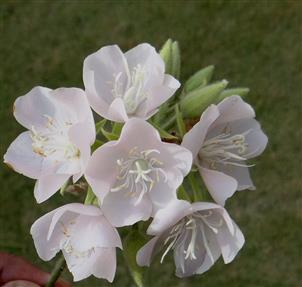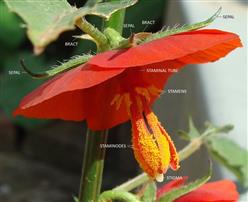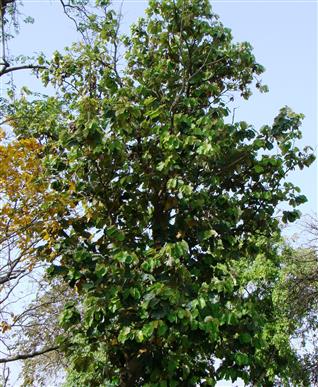STERCULIACEAE
Trees or shrubs, rarely herbs or lianas, usually with soft wood and strong bast fibres, juice frequently mucilaginous, younger parts usually stellate pubescent. Stipules usually present, caducous. Leaves alternate, petiolate, simple or palmately lobed or compound. Inflorescence axillary or rarely terminal, usually cymose, less commonly racemose or paniculate, rarely flowers solitary. Flowers bisexual or unisexual or polygamous, usually actinomorphic, hypogynous. Sepals usually 5, +/- connate, valvate, persistent. Petals 5 or absent, free, adnate to the staminal tube at base, twisted, imbricate or valvate. Androgynophore usually present. Stamens 5-many, in 2 whorls, outer antisepalous whorl absent or reduced to staminodes; opposite to petals often indefinitely branched, more or less monoadelphous at the base; anthers bithecous. Carpels (1-) 5 or (10-12), syncarpous or sometimes partly to completely apocarpous, ovary superior, sessile or together with stamens raised on androgynophore, locules equal to number of carpels, 2-many ovules in each loculus on axile placentas; style 1 or as many as carpels; stigma/s simple. Fruit various, usually dry, dehiscent capsule, schizocarp or etaerio of follicles or rarely fleshy, indehiscent and berry-like. Seeds usually endospermic.
68 genera, 1000-1100 species
* Note: Sterculiaceae sometimes merged with the family Malvaceae


